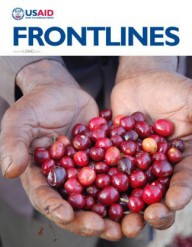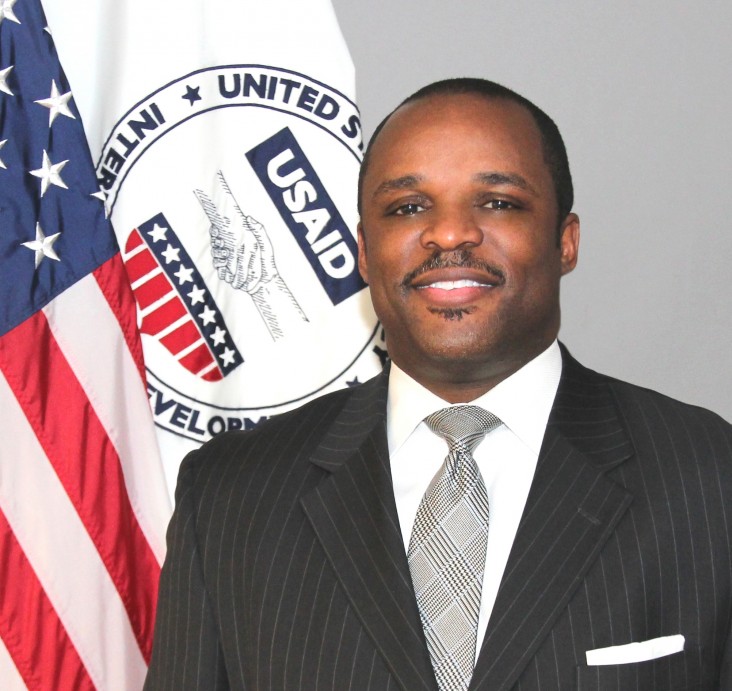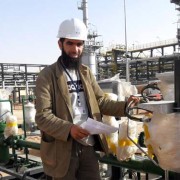The Kaiser Family Foundation recently polled more than 1,500 people about foreign aid and the results revealed that only one in 20 knew how much—or how little—the United States spends on foreign assistance. Less than 1 percent of the $4 trillion federal budget goes to foreign aid. Probably fewer still realize the benefits to Americans and American companies that stem from that assistance.
There are many examples of how Americans can participate in USAID’s work in development. In USAID’s U.S. Global Development Lab, where I head the Center for Transformational Partnerships, we have a number of programs that tap into the best in American talent, expertise and ingenuity. Open development programs like the Grand Challenges for Development and Development Innovation Ventures provide opportunities for American scientists, researchers, entrepreneurs, innovators, and in the case of our recent Fighting Ebola: A Grand Challenge for Development, a wedding gown designer, to contribute their ideas to solve some of humanity’s greatest challenges.
Our Higher Education Solutions Network (HESN), a multidisciplinary research and development effort led by seven world-class universities, six of them in the United States, is working directly to evaluate and strengthen real-world innovations in development. This network is creating a vibrant framework of cooperation between development professionals and academia by harnessing the ingenuity and passion of scientists, students, faculty and entrepreneurs. And our Research and Innovation Fellows Program offers talented students from institutions around the United States opportunities to work on cutting-edge research and innovation in developing countries.
Through our Center for Transformational Partnerships, we actively engage with the private sector in the United States to tap the power of businesses large and small, established and entrepreneurial, to fuel economic growth, innovation and job creation, and deliver broad-based development impact. So we look for opportunities to leverage private sector skills, resources and technologies to achieve scalable solutions via market-led approaches that can be sustained in the long term without donor assistance.
But USAID pays great dividends to Americans aside from our programs that seek out and tap the expertise and ingenuity of America’s citizens and companies. Foreign aid promotes prosperity and self-reliance by encouraging economic development and private enterprise in aid-recipient countries, as well as opening and developing international markets for the United States.
Microsoft founder and philanthropist Bill Gates put it in simple terms in his annual letter: “The 1% we spend on aid for the poorest not only saves millions of lives, it has an enormous impact on developing economies—which means it has an impact on our economy.”
History has shown that, as people transition from barely surviving to everyday consumers, their newfound prosperity opens up new markets for U.S. companies and generates American jobs.
Foreign aid is actually good for our bottom line.
Leaders of American industry—including Coca-Cola, Pepsi and Google—all agree that the best way to invest in America’s economy and defense is through foreign aid. With foreign aid, we create consumers of U.S. products. That’s why 95 percent of the United States’ top trade partners were, at one time, U.S. aid recipients.
The numbers speak for themselves. The combination of handling, processing and transporting commodities from farms to U.S. ports, plus the cost of transporting those products to foreign ports, adds nearly $2 billion in output, more than $500 million in earnings for households and more than 13,000 jobs. Nearly 50 percent of American exports go to the developing world. And one in three domestic manufacturing jobs depends on these exports. Businesses that export goods provide one in every five American jobs.
Already, the poorest two-thirds of the world’s population accounts for $5 trillion in purchasing power. Every indication suggests that the economic power of low- and middle-income countries will only increase in the coming years, as economic growth in developing countries vastly outpaces growth in industrialized countries. Foreign aid has laid the groundwork for mutually beneficial trading relationships; 11 of America’s top 15 trading partners were once recipients of U.S. foreign aid.
As USAID’s mission states: “We partner to end extreme poverty and to promote resilient, democratic societies while advancing our security and prosperity.” As this last clause implies, foreign aid promotes national security by helping to fight the causes of terrorism, stabilize weak states, and promote regional-level security and global stability. Foreign assistance plays a crucial role in America’s larger struggle to combat conditions that can spawn terrorism—namely, poverty, weak institutions and corruption—by promoting economic development, good governance and transparency.
By assisting countries that are less developed than the United States, we help foster stable societies with which we are able to partner on economic, security and diplomatic issues. It’s time to think of aid as one of a number of tools—alongside other financial flows, trade, the movement of people, and the creation and spread of new technologies—that promote sustainable development abroad to the benefit of all, here and overseas.













Comment
Make a general inquiry or suggest an improvement.